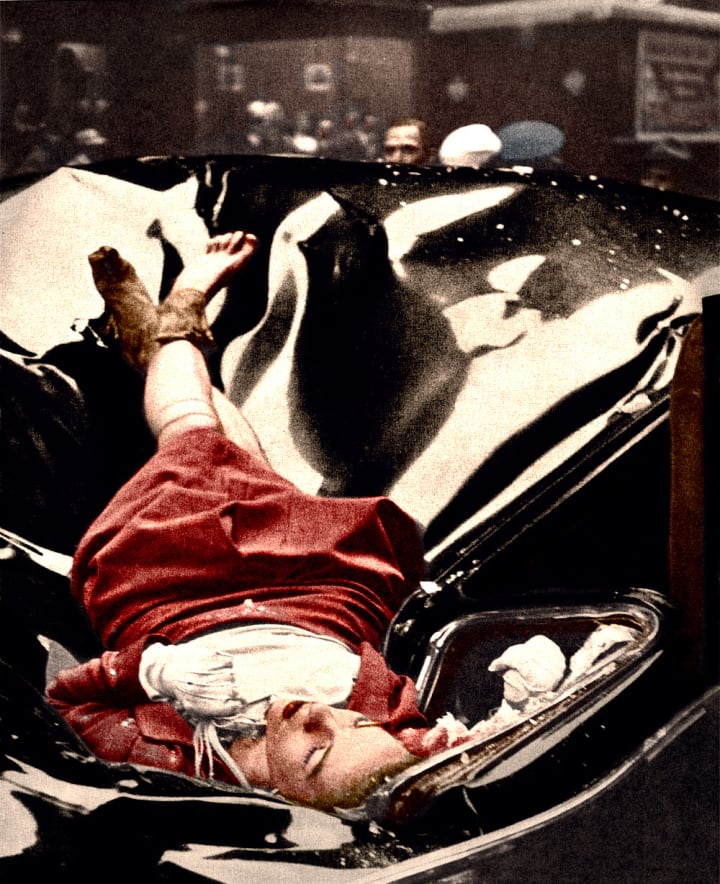On May 1st, 1947, New York City awoke to a story that would become legend. A young woman named Evelyn McHale, only 23 years old, stepped onto the observation deck of the Empire State Building and made a choice that would etch her name into history. With a calm resolve, she leapt from the 86th floor, plummeting over a thousand feet before landing on the roof of a United Nations limousine parked below. What should have been a grotesque scene of brokenness and blood was instead something surreal, something disturbingly beautiful. Her body lay as though gently placed there—her legs crossed at the ankles, her gloved hands still clutching her pearls, her face serene as if in peaceful sleep.
It was fate—or perhaps cruel coincidence—that a photography student, Robert Wiles, happened to be nearby that morning. Only minutes after Evelyn’s fall, before the authorities arrived, he captured a photograph that would become one of the most haunting images of the 20th century. Published in Time magazine a week later, it was christened “The Most Beautiful Suicide.” The world could not look away. The picture, both horrifying and eerily tender, seemed to freeze a moment where tragedy and grace collided.
Artists like Andy Warhol later reimagined it, turning Evelyn into an icon of sorrow and strange beauty. To this day, the image is studied not just as a photograph, but as a cultural artifact—a glimpse into how death, despair, and aesthetics intertwine in the public imagination. Evelyn McHale’s final act became more than a personal tragedy; it became a symbol, unsettling and unforgettable. Her story lingers because it defies expectations: no carnage, no chaos, just a haunting serenity captured in one impossible frame.

